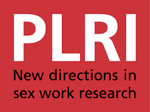Article in PLoS ONE 6(12): e28363.
Background
In the months leading up to the 2010 FIFA World Cup in South Africa, international media postulated that at least 40,000 foreign sex workers would enter South Africa, and that an increased HIV incidence would follow. To strengthen the evidence base of future HIV prevention and sexual health programmes during international sporting events, we monitored the supply and demand of female sex work in the weeks before, during and after the 2010 FIFA World Cup.
Methodology/Principal Findings
We conducted three telephonic surveys of female sex workers advertising online and in local newspapers, in the last week of May, June and July 2010. The overall response rate was 73.4% (718/978). The number of sex workers advertising online was 5.9% higher during the World Cup than before. The client turnover rate did not change significantly during (adjusted rate ratio [aRR] = 1.05; 95%CI: 0.90–1.23) or after (aRR = 1.06; 95%CI: 0.91–1.24) the World Cup. The fraction of non-South African sex workers declined during (adjusted odds ratio [aOR] = 0.50; 95%CI: 0.32–0.79) and after (aOR = 0.56; 95%CI: 0.37–0.86) the World Cup. Relatively more clients were foreign during the World Cup among sex workers advertising in the newspapers (aOR = 2.74; 95%CI: 1.37–5.48) but not among those advertising online (aOR = 1.06; 95%CI: 0.60–1.90). Self-reported condom use was high (99.0%) at baseline, and did not change during (aOR = 1.07; 95% CI: 0.16–7.30) or after (aOR = 1.13; 95% CI: 0.16–8.10) the Word Cup.
Conclusions/Significance
Our findings do not provide evidence for mass-immigration of foreign sex workers advertising online and in local newspapers, nor a spike in sex work or risk of HIV transmission in this subpopulation of sex workers during the World Cup. Public health programmes focusing on sex work and HIV prevention during international sporting events should be based on evidence, not media-driven sensationalism that further heightens discrimination against sex workers and increases their vulnerability.
(abstract authors’ own)
Theme:
Author:
Wim Delva, Marlise Richter, Petra De Koker, Matthew Chersich, Marleen Temmerman

